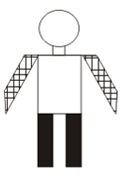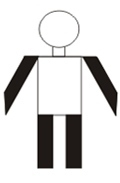About Cerebral Palsy
Cerebral palsy, or CP, refers to a group of developmental conditions that have several features in common. All are associated with (caused by) some kind of injury to the developing brain. The injury can occur in the womb, during the birth of the baby, or in the first couple of years after birth (usually because of infection or trauma to the brain).

The visible evidence of CP are the ‘motor disabilities’ – challenges in how a person develops and maintains control of their movement. Children with CP usually have issues with whole-body movement, including walking, and often in using their hands and arms.
In addition, children with CP may also have other challenges resulting from their brain injury, including problems with:
Seizures
Thinking
Communicating
Vision
Hearing
Behaviour
What parts of the body are involved?

CP can involve one side of the body and look like a stroke (which might in fact be the original cause of this form of CP). This is often called ‘unilateral’ CP or ‘hemiplegia’ because one side of the body is affected.

CP can be ‘bilateral’, meaning that it affects motor development and control on both sides of the body. People talk about ‘diplegia’, meaning that the main effects of the CP are on lower limb control, with some (or occasionally no) challenges with upper limb function.

We also refer to ‘quadriplegia’ (from Latin) or ‘tetraplegia’ (from Greek) to refer to whole-body involvement with all the limbs and the trunk affected.
What kind of motor control problems might one observe?
There are many words used to describe the ways that motor control may be impaired. These words describe the way the CP affects movement, and none of these terms should be considered a kind of CP.
Spasticity
Refers to situations in which muscles are especially sensitive to being stretched. The reflexes are very reactive, and this may contribute to the problems people have when they move, especially quickly. There are a number of ways to treat spasticity, but these treatments do not restore typical motor control.
Dystonia
Refers to moment-to-moment variability in muscle tone, such that it can be challenging for people to control their movements (such as reaching, or walking, or speaking clearly and fluently).
Athetosis
Refers to writhing movements of the limbs, head and neck, and instability of the trunk, usually more evident when people are trying to do things than when they are sitting quietly (also known as ‘choreoathetosis’).
Ataxia
Refers to lack of coordination and hence unsteadiness of the trunk, similar to what one sees in a person who has had too much to drink (though in CP this is not the cause of the unsteadiness!).
How 'severe' is the CP?
There are several ways to describe and classify function in people with CP. These systems each have five ‘levels’, ranging from most functional (Level I) to least functional (Level V).

All have been carefully developed, and it has been shown that
- The distinctions between the levels of function in each of these systems are meaningfully different from the others
- People can be consistent in how they use these systems
- Parents can categorize their child as well as professionals can.
All three systems can be downloaded free and in several languages.
- The Gross Motor Function Classification System (GMFCS)
- The Manual Ability Classification System (MACS)
- The Communication Function Classification System (CFCS)
